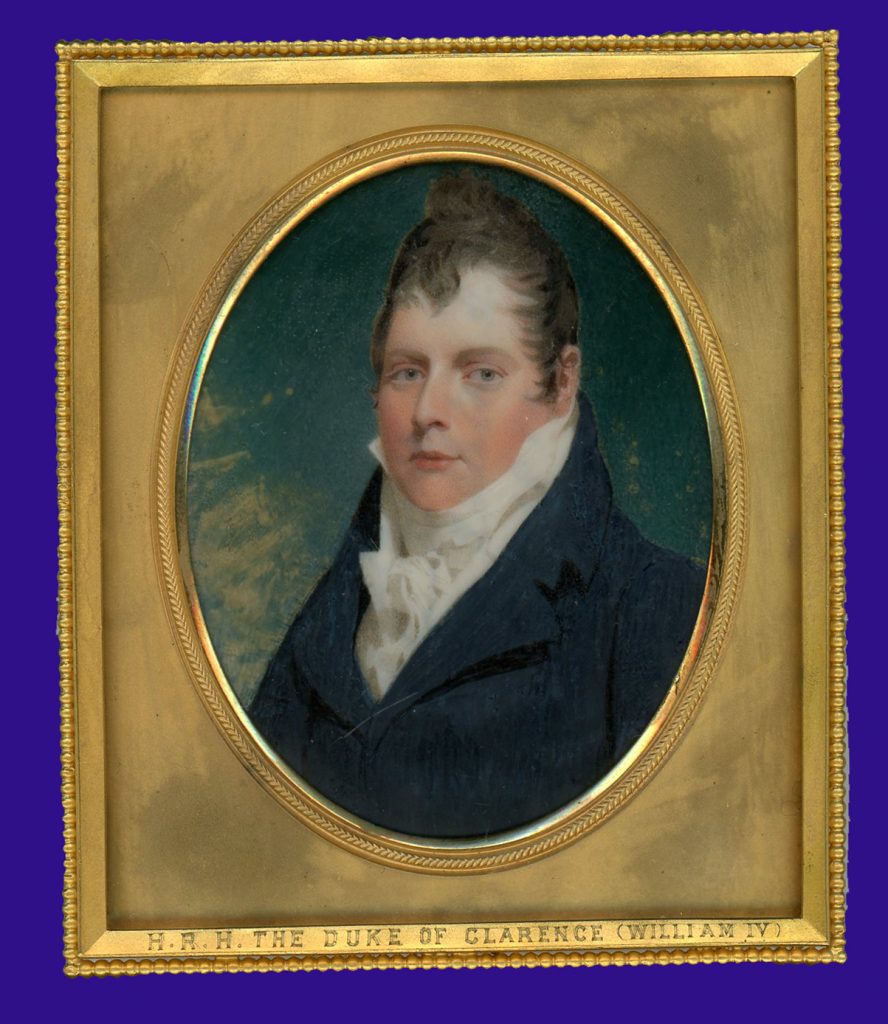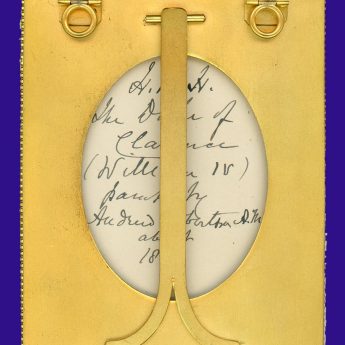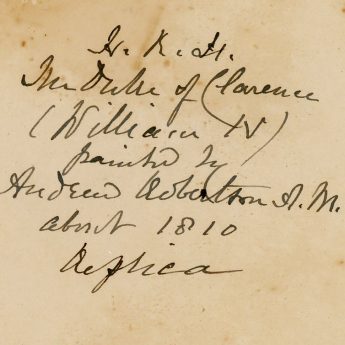
A Future King
Portrait miniatures, silhouettes, portraits & an omnium-gatherum of historical interest & character.
Enquiries and orders
A Future King
Andrew Robertson
Sold
It was in February 1807 that miniature painter Andrew Robertson was first summoned to Windsor Castle and commissioned to paint portraits of the Royal Princesses. His diary entries relate how he then took up residence at the White Hart Inn (the Castle being “so full”) and had regular sittings with Princess Mary – a “beautiful creature”, Princess Augustus – “very amiable”, Princess Elizabeth – “majestic character”, and Princess Amelia – “angelic creature”. It was a busy schedule: for instance on 3 March the artist had hour-long sittings with the Duke of Sussex, followed by Princess Elizabeth, then Princess Sophia and finally with Princess Augusta. The Queen also signalled her willingness to sit for a portrait.
Although the letters and diary entries collected and published by Andrew Robertson’s daughter make no specific reference to sittings with the Duke of Clarence, it seems probable that his portrait was also painted at this time and not in 1810 as the artist in later life recalled.
Born in 1765, Prince William Henry was the third son of King George III. He served in the Royal Navy and was created Duke of Clarence in 1789. Following the death of his brother, George IV, he inherited the throne in 1830 at the age of 64 becoming William IV and reigning until his own death in 1837.
William had a long-running affair with an Irish actress, Dorothea Bland (better known by her stage name Mrs Jordan) fathering ten children with her. The affair finally came to an end in 1811. William did not marry until 1818, his bride being Princess Adelaide of Saxe-Meiningen. The couple had two daughters though neither survived. Upon his death he therefore had no legitimate children so the throne passed to his young niece, Victoria.
Robertson was pleased with his finished portraits of the Princesses calling them his “best pictures” and anticipated being able to paint lucrative copies in due course. The official finished portrait of the Duke of Clarence is not recorded within the Royal Collection; perhaps it was gifted to his mistress. This copy appears to been retained by the artist who later signed it on the reverse – ‘H.R.H. / The Duke of / Clarence / (William IV) / painted by / Andrew Robertson A.M. / about / 1810’. A second similarly signed card is held within the frame.
The portrait is in fine condition and is set in a later gilt metal frame with a gilt metal mount and beaded edge. The frame is also glazed on the back to show the artist’s inscription. With hanging rings and an easel stand, it is engraved across the front edge ‘H.R.H. The Duke of Clarence (William IV)’.
The son of a Scottish architect, Andrew Robertson (1777-1845) showed early musical talent but chose to pursue drawing and painting as a career despite having studied medicine. In 1801 he sailed from Edinburgh to London where he entered the Royal Academy Schools. There he benefitted from the influential patronage of Benjamin West President of the Royal Academy and, in 1805, was appointed Miniature Painter to the Duke of Sussex (George IV’s younger brother). Robertson worked hard at perfecting his art but also found time to set about raising an Artists of London Volunteer Corps in response to the threat of French invasion, intending to use the Royal Academy building as an arms depot. The plan was not, however, sanctioned by the Government. Robertson was a founder member of the Associated Artists in Water Colour and exhibited his miniature portraits of the princesses there in 1808.
Item Ref. 7240
Size: framed, 110 x 93mm
Literature: Letters and Papers of Andrew Robertson ed. Emily Robertson, 1895

